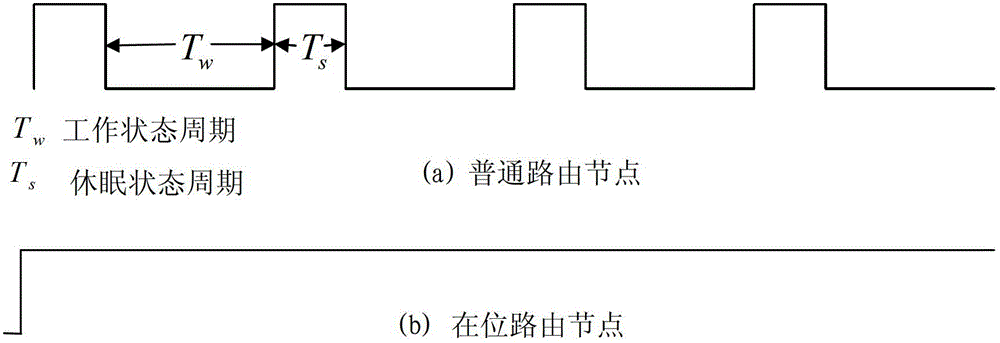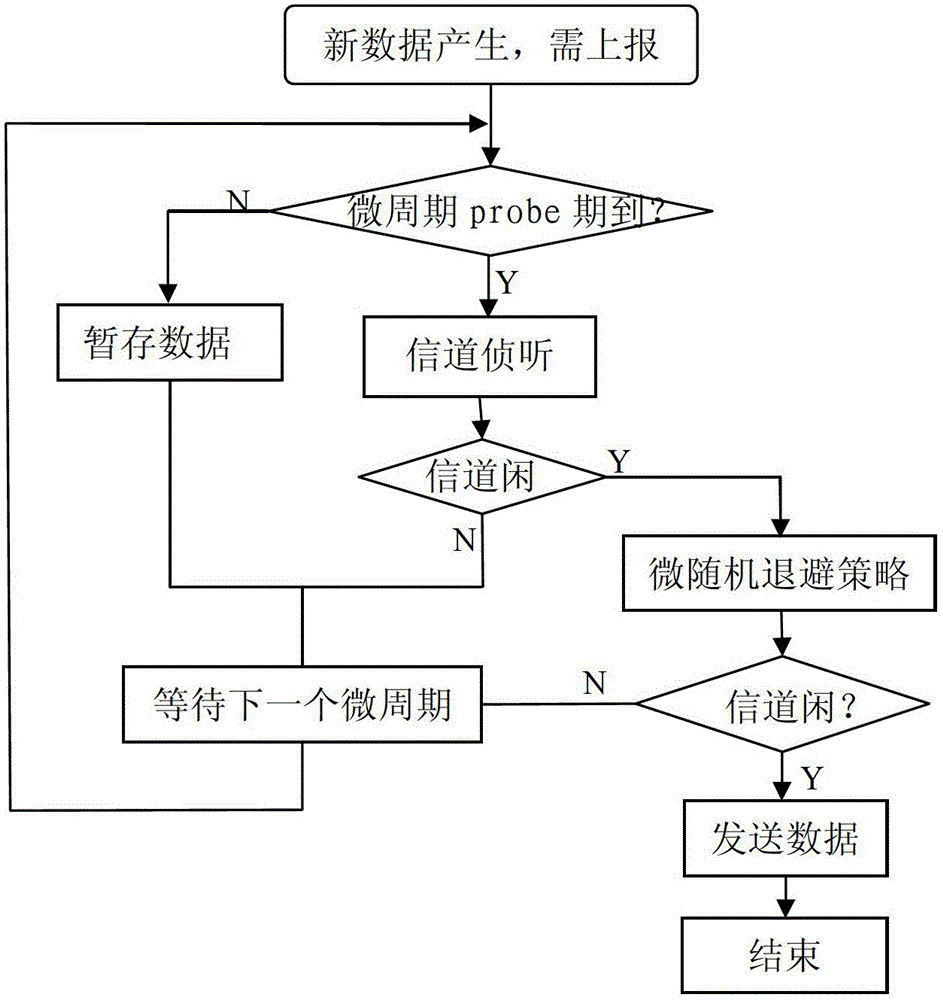Micro-cycle-based sleep method adapted to routing nodes in wireless sensor network
A wireless sensor and microcycle technology, which is applied in the field of wireless sensor network and Internet of Things, can solve the problems of inaccessibility, etc., and achieve the effect of improving the life span and reducing energy consumption
- Summary
- Abstract
- Description
- Claims
- Application Information
AI Technical Summary
Problems solved by technology
Method used
Image
Examples
Embodiment Construction
[0026] In order to make the purpose, technical solution and advantages of the present invention clearer, the present invention will be further described.
[0027] First of all, in order to distinguish it from the routing node sleep strategy in a redundant deployment environment, the concept of "on-site routing node" is defined. The "in-place routing node" is considering that a node may serve as a routing function in certain time periods, and in some time periods it is used as an ordinary routing node and does not serve as a routing function. The nodes are called "in-place routing nodes".
[0028] In the existing mechanism, the in-position routing node cannot enter the dormant state. The present invention adopts a micro-sleep strategy, allowing the on-site routing node to enter the dormant state periodically, while ensuring that the on-site routing node can normally complete routing functions such as relay forwarding. Specifically include:
[0029] The sensor network nodes a...
PUM
 Login to View More
Login to View More Abstract
Description
Claims
Application Information
 Login to View More
Login to View More - R&D
- Intellectual Property
- Life Sciences
- Materials
- Tech Scout
- Unparalleled Data Quality
- Higher Quality Content
- 60% Fewer Hallucinations
Browse by: Latest US Patents, China's latest patents, Technical Efficacy Thesaurus, Application Domain, Technology Topic, Popular Technical Reports.
© 2025 PatSnap. All rights reserved.Legal|Privacy policy|Modern Slavery Act Transparency Statement|Sitemap|About US| Contact US: help@patsnap.com



